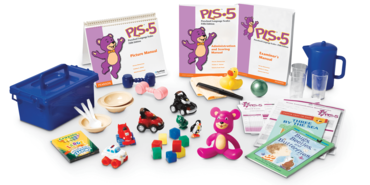PLS™-5 Preschool Language Scales Fifth Edition offers a comprehensive developmental language assessment with items that range from pre-verbal, interaction-based skills to emerging language to early literacy. Guidance on using this test in your telepractice.
Preschool Language Scales | Fifth Edition
PLS-5
PLS™-5 Preschool Language Scales Fifth Edition offers a comprehensive developmental language assessment with items that range from pre-verbal, interaction-based skills to emerging language to early literacy. Guidance on using this test in your telepractice.Choose from our formats
Kits
Starter & complete kits, print & digital
6 options
Test forms reports
Booklets, record forms, answer sheets, report usages & subscriptions
19 options
Support materials
Manuals, stimulus books, replacement items & other materials
12 options
All products
All tests and materials offered for PLS-5
37 options
